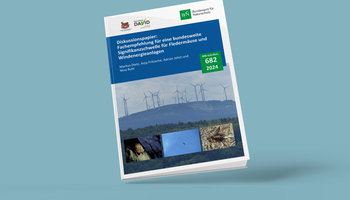This project records baseline data on a larger scale for the first time in order to evaluate the effects of small wind turbines on birds and bats. The study also analyses the relevant determining factors. This will enable the reduction of possible negative effects on the species, if energy generation from small wind turbines becomes more important in future.
Interest in small wind turbines (SWT) is growing constantly due to their many positive features. This project explores the question of whether SWTs might also have significant impacts on birds and bats, particularly when this form of energy generation is expanded further.
If the project confirms this hypothesis then measures need to be developed and demonstrated as matters progress in order to avoid or mitigate these effects. Overall the aim is to take the first step in standardising planning practice for SWTs.
The first step identifies bird and bat collision rates with SWTs. This is done by looking for collision victims around the turbines according to the standard guidelines given by Korner-Nievergelt. The finds are scientifically classified and interpreted. This should identify the range of species affected and take account of various determining factors like the type of SWT and the structure of the terrain.
In addition, bat calls in the area surrounding the SWT will be logged using continuous acoustic recording. More detailed observations will then be made at selected sites with higher bat activity using thermal imaging or infra-red cameras and bat detectors in order to find out whether and how animals collide with the rotor blades.
It also needs to be established whether SWTs drive bats and birds out of their habitats. Comparative surveys of breeding birds and roosting birds in an area of 250 m around the SWT and on sample areas will be studied to determine the displacement effect of turbines on bird species. In order to study any possible avoidance behaviour of bats, SWTs will be shut down on selected days when heat imaging observations and continuous acoustic recording are taking place.
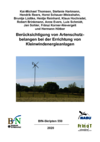
Berücksichtigung von Artenschutzbelangen bei der Errichtung von Kleinwindenergieanlagen
BfN-Skripten 550 (2020)
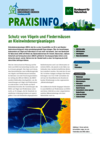
Schutz von Vögeln und Fledermäusen an Kleinwindenergieanlagen
PraxisINFO 4 (2022)
Michael-Otto-Institut im NABU (Nature and Biodiversity Conservation Union)
Goosstroot 1, 24861 Bergenhusen
Kai-Michael Thomsen
Tel.: +49 4885/570
Kai-Michael.Thomsen(at)NABU.de
Dr. Hermann Hötker (†)
Freiburger Institut für angewandt Tierökologie (FRINAT) GmbH
Dunantstr. 9, 79110 Freiburg
Dr. Robert Brinkmann
brinkmann(at)frinat.de
Dr. Stefanie Hartmann
hartmann(at)frinat.de
Federal Agency for Nature Conservation (BfN)
FG II 4.3 Nature conservation and renewable energies
Alte Messe 6, 04103 Leipzig
Asja Weber
asja.weber(at)BfN.de
03.04.2024
Weiter
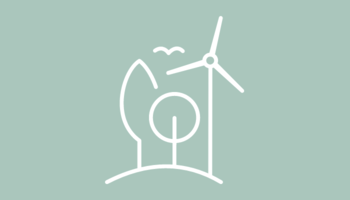
03.04.2024
Weiter
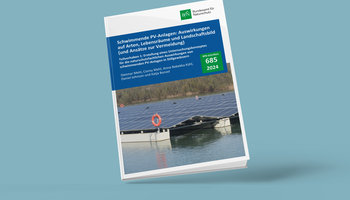
19.03.2024
Weiter
